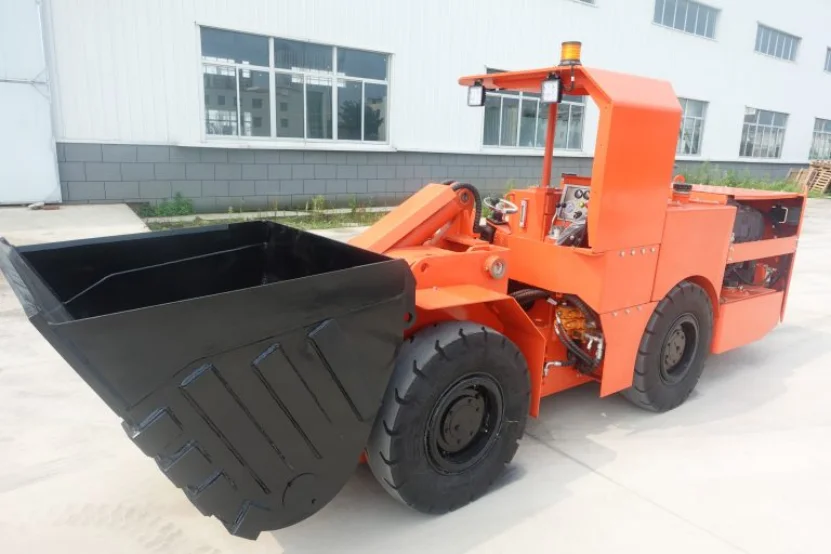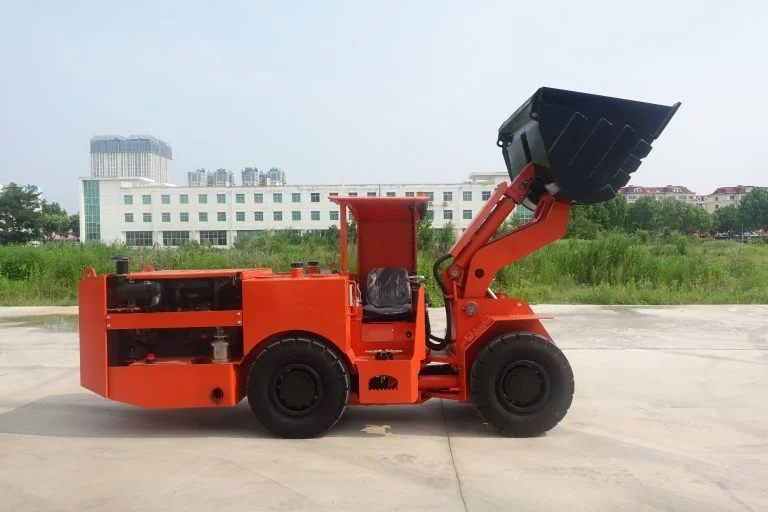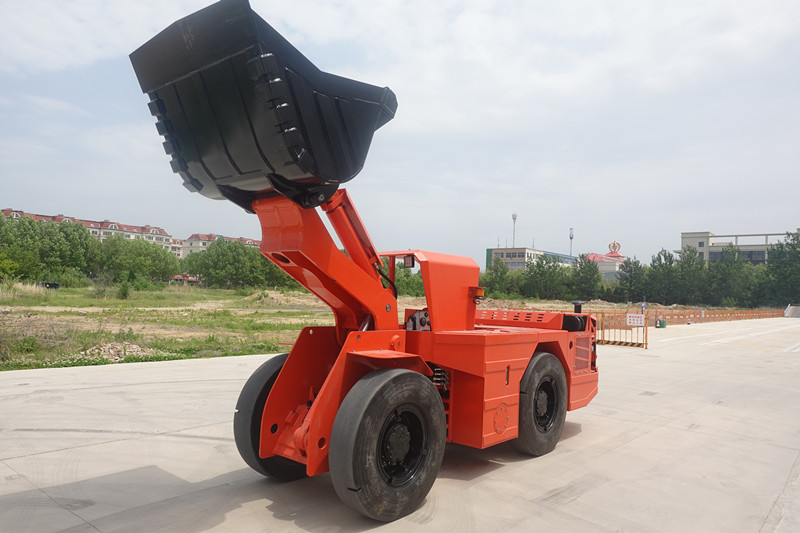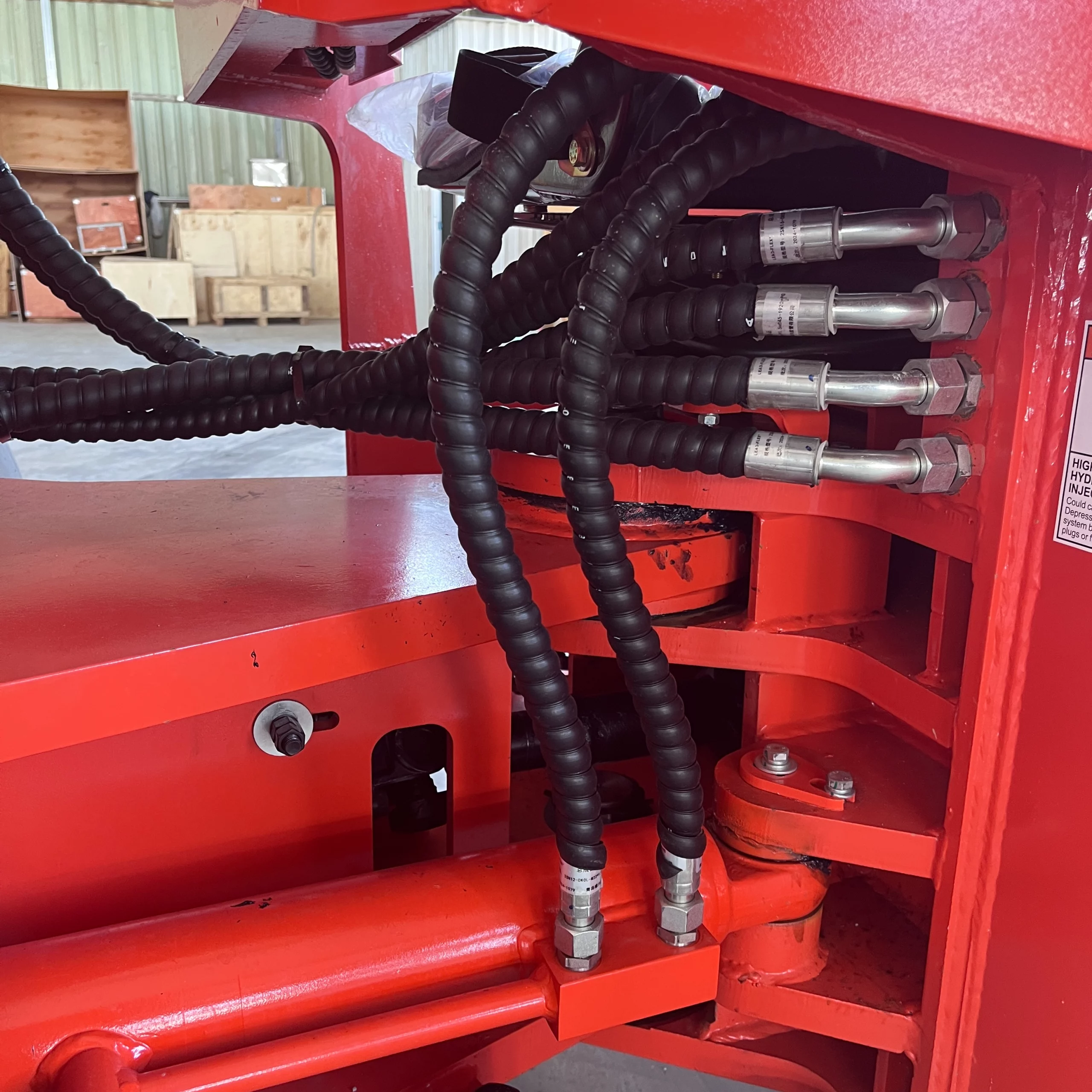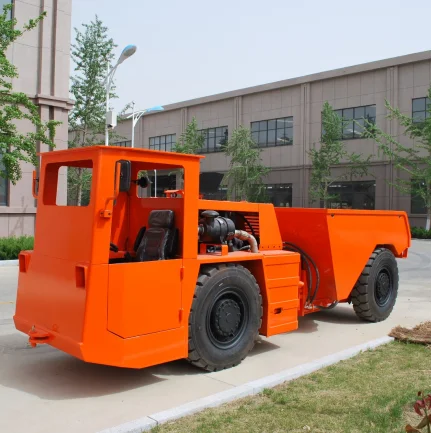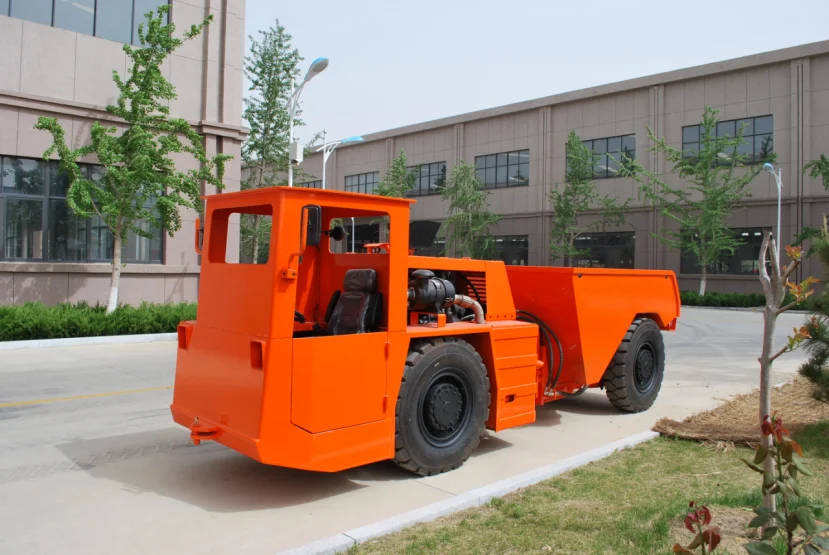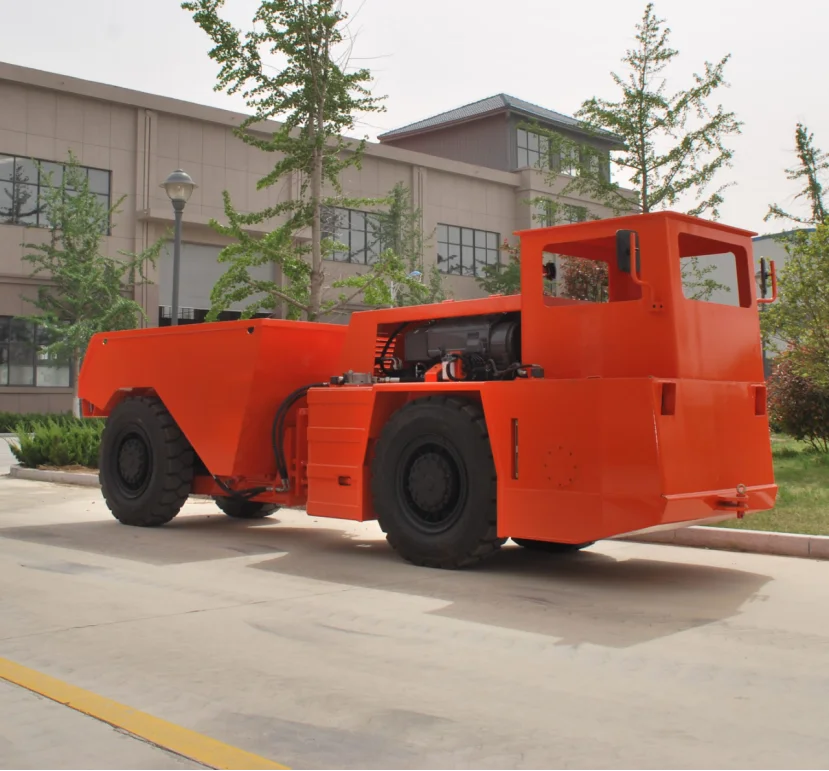Understanding Underground Scooptrams
Underground scooptrams are vital tools in mining activities. They are built to move materials efficiently in tight underground areas. These machines are designed to boost productivity and protect workers, particularly in slim, low tunnels.
Key Features of Underground Scooptrams
Scooptrams stand out due to their small size, sturdy construction, and ability to work in tough settings. They feature powerful systems that enhance digging speed and loading performance. For example, the CHWJ-1.5 model from Yantai Chi Hong Machinery Co., Ltd. has a tramming capacity of 3 metric tons. It offers a top-tier payload-to-weight ratio. Its compact build and tight turning circle make it perfect for narrow veins. Plus, daily upkeep can be done at ground level, which makes servicing safer.
Another key aspect is the focus on operators. This improves comfort and safety. Take the CHWJ-6 model as an example. It includes a ROPS/FOPS-certified operator canopy or cabin. This setup boosts safety while keeping the operator comfortable. These machines also have smart control systems. They allow quick checks and cut down on unexpected stops.
Common Applications in Mining Operations
Underground scooptrams are crucial for handling materials in mines. They load, transport, and unload ore or waste rock. Their small size helps them move easily through narrow passages. This makes them essential for mines with limited room.
For instance, the CHWJ-4 loader is built for high output. It has clever boom design that speeds up bucket filling. It also shortens work cycles. This ability is vital for clearing tunnel ends fast. It keeps mining running smoothly. Their flexibility also suits various underground settings, improving overall work efficiency.
The Importance of Collision Prevention in Underground Mining
Safety is critical in underground mining. The risks of tight spaces and heavy equipment make it a priority. Preventing crashes is key to keeping workers safe and operations steady.
Challenges of Navigating Narrow and Low Roadways
Underground paths are often slim with low roofs. This creates big hurdles for operating large machines like scooptrams. Operators must steer through these cramped areas. They need to avoid hitting walls, other gear, or people.
The CHWJ-0.6 scooptram tackles these issues well. It has a smaller width and turning radius than others in its group. This design cuts costs per ton by easing travel through narrow veins. Still, mistakes by operators can remain a danger.
Risks Associated with Collisions in Underground Mines
Crashes can lead to serious problems. These include damaged equipment, work delays, and harm to workers. Tight underground spaces make these risks worse. Visibility is often poor.
To lessen these dangers, some scooptrams use advanced tools. Intelligent control systems track all machine details. They speed up problem-solving and reduce unplanned breaks. Such features play a big role in avoiding collisions by raising awareness during work.
What is LiDAR Technology?
LiDAR, or Light Detection and Ranging, has become a major breakthrough across industries. It stands out for its accuracy and dependability. It uses laser pulses to measure distances precisely.
Overview of LiDAR and Its Functionality
LiDAR works by sending out laser beams. These beams hit objects and bounce back to the sensor. By timing how long the light takes to return, LiDAR builds detailed 3D maps of the area.
This method provides unmatched precision in spotting objects. It works well even in dim light. This makes it ideal for underground tasks where seeing clearly is tough.
Applications of LiDAR in Industrial Environments
In places like mines, LiDAR boosts safety. It offers real-time awareness of space. It can be added to scooptrams to spot obstacles or nearby machines automatically.
For example, fitting LiDAR into underground loaders could greatly lower crash risks. It warns operators of dangers ahead of time. This forward-thinking method protects workers. It also cuts downtime from accidents.
How LiDAR Can Enhance Underground Scooptram Safety
Improving Navigation Accuracy with LiDAR
LiDAR technology greatly improves how well scooptrams navigate underground. It sends out laser pulses and measures how long they take to come back. This creates exact 3D maps of the surroundings. It’s especially helpful in mines where tight spaces and low light limit visibility.
This precise data helps operators guide scooptrams through slim tunnels more safely. It reduces mistakes from human guesses. Take the CHWJ-1.5 model. It’s known for its small size and skill in narrow veins. Adding LiDAR could make it even better. It would give real-time location info. This keeps operators safe while maintaining high output.
Detecting Obstacles in Real-Time Using LiDAR Sensors
A major strength of LiDAR is spotting obstacles instantly. This is vital in underground mining. Unexpected hazards like loose rocks or other machines can be risky. LiDAR sensors scan the area constantly. They find potential problems and warn operators before a crash happens.
For instance, adding LiDAR to the CHWJ-6 would enhance its safety features. This model already has a ROPS/FOPS-certified cabin. With LiDAR, it could alert operators to nearby objects right away. This prevents accidents and keeps work flowing. It also reduces downtime from crashes, boosting efficiency.
Enhancing Operator Awareness and Decision-Making
LiDAR greatly improves what operators can see around them. It gives a full picture of the environment. This better awareness helps operators decide fast. This is key in the high-stakes world of underground mining.
Pairing LiDAR with smart control systems takes this further. These are already in some modern scooptrams. They offer real-time info on machine stats and surroundings. This combo streamlines work. It also helps operators handle risks well. The CHWJ-4 loader, with its smart boom design and strong powertrain, could benefit more with LiDAR. It would aid quick choices during tasks like clearing tunnel ends.
Practical Considerations for Implementing LiDAR in Underground Scooptrams
Technical Requirements for LiDAR Integration
Adding LiDAR to scooptrams requires some technical steps. The system must be tough enough for harsh mining conditions. Think dust, shaking, and temperature swings. It also needs to work with current machines smoothly. This avoids disrupting workflows.
Take the WJD-2 electric loader from Yantai Chi Hong Machinery Co., Ltd. It has advanced power matching and energy-saving motors. It’s a great fit for upgrades like LiDAR. It already has grounding and leakage protections. This makes it ready for more tech additions.
Cost Implications and Return on Investment Analysis
Adding LiDAR might cost a lot at first. But the long-term gains often make up for it. Better safety cuts costs from accidents. Improved work efficiency lifts output too.
A cost-benefit study should look at key points. These include less downtime, lower repair bills from fewer crashes, and safer workers reducing claims. For example, adding LiDAR to the CHWJ-6 could make the most of its 14-metric-ton capacity. It would also lower risks during work.
Maintenance and Reliability of LiDAR Systems
Keeping LiDAR working well is crucial. Regular checks and cleaning keep sensors sharp in dusty mines. Teaming up with makers who offer strong support helps too.
Yantai Chi Hong Machinery Co., Ltd. shines here. Their after-sale service includes full checkups and training. These keep equipment running at its best.
Future Trends: The Role of Advanced Technologies in Mining Equipment
The future of underground mining blends tools like LiDAR with artificial intelligence (AI). AI can study LiDAR data to spot trends or predict dangers early. This mix leads to smarter work. It automates simple tasks and sharpens decisions.
For instance, adding AI analytics to the CHWJ-3 could improve its 6-metric-ton capacity. It might predict upkeep needs or find weak spots instantly.
Frequently Asked Questions (FAQs)
What are the advantages of using LiDAR in underground scooptrams?
LiDAR improves navigation precision, spots obstacles instantly, and boosts operator awareness with detailed space data.
How does LiDAR contribute to collision prevention?
LiDAR scans the area constantly. It warns operators of hazards before crashes happen.
Are there cost benefits associated with implementing LiDAR technology?
Yes, fewer accident costs and better work efficiency often lead to good returns over time.
Can existing scooptram models be upgraded with LiDAR?
Many newer scooptram designs can handle upgrades like LiDAR to improve their abilities.
For more details on tailored solutions from Yantai Chi Hong Machinery Co., Ltd., reach out today!


